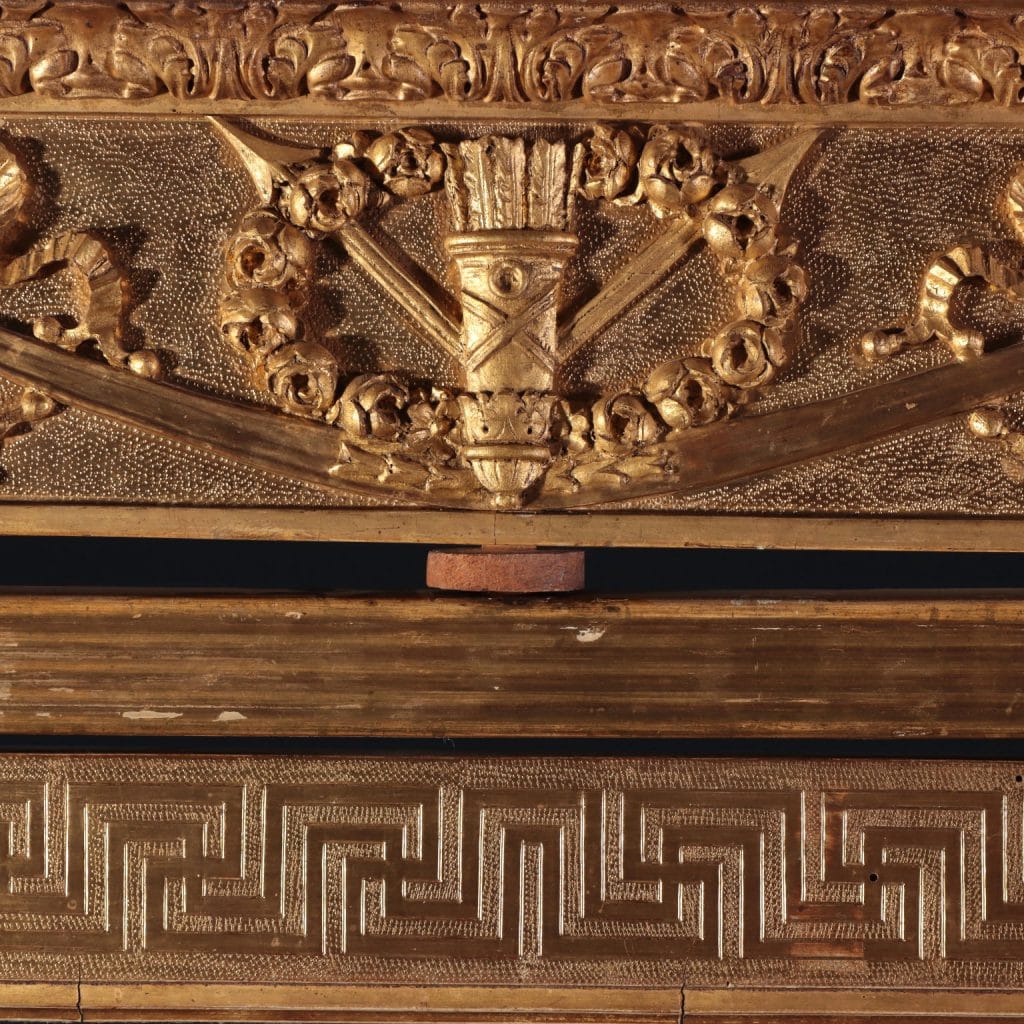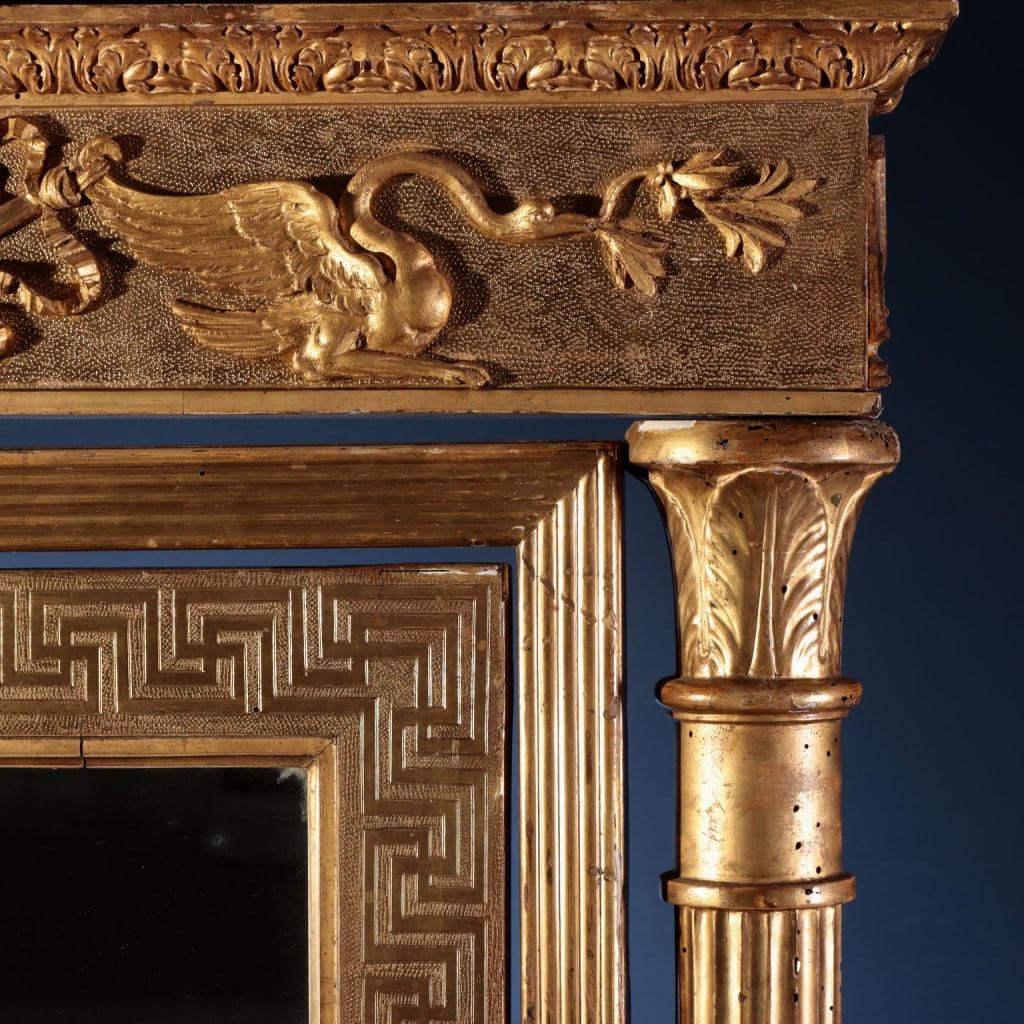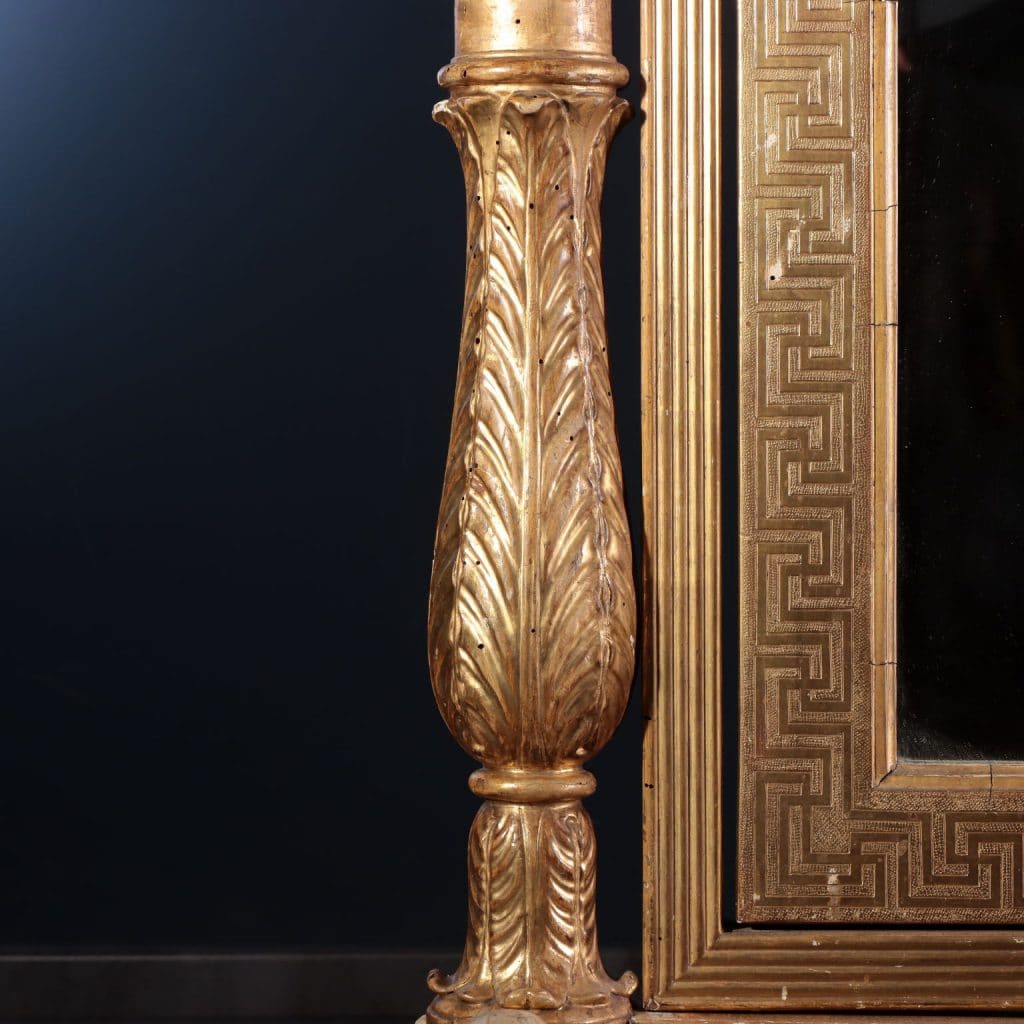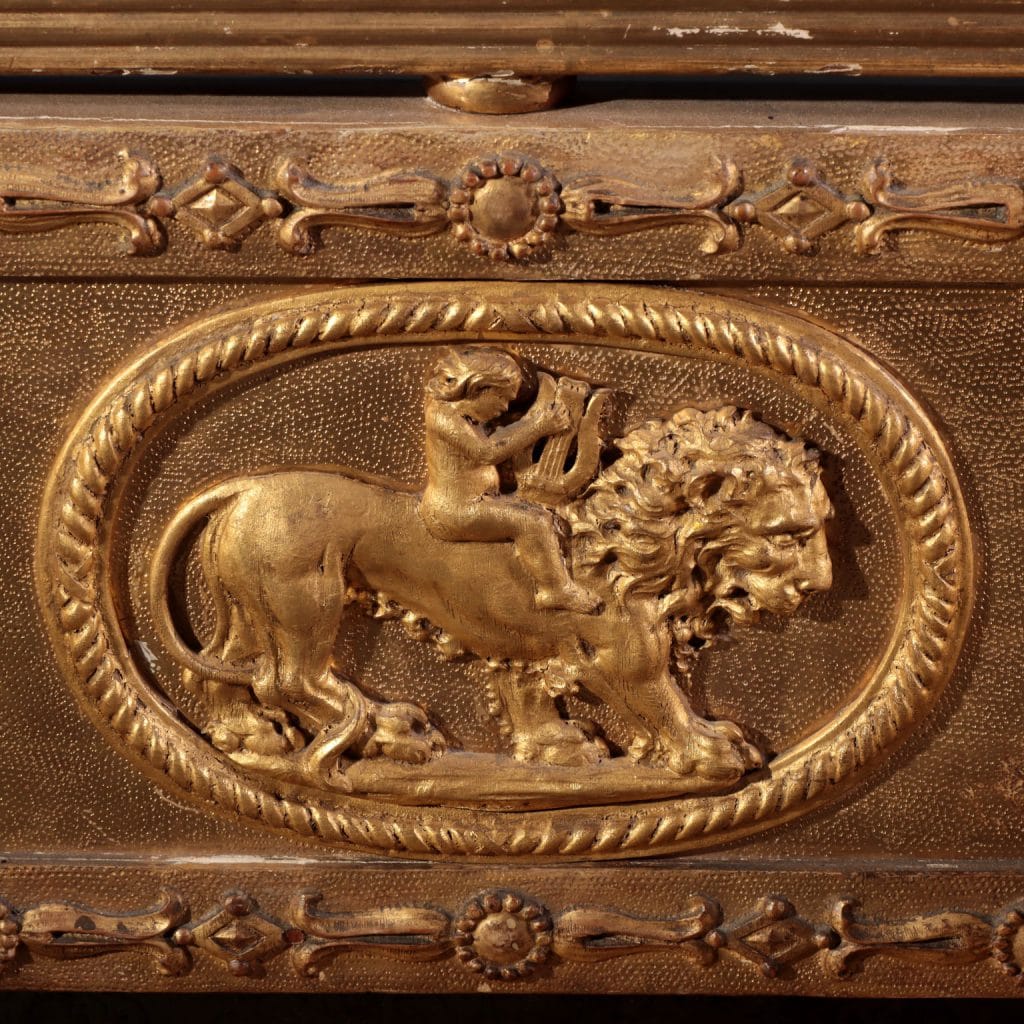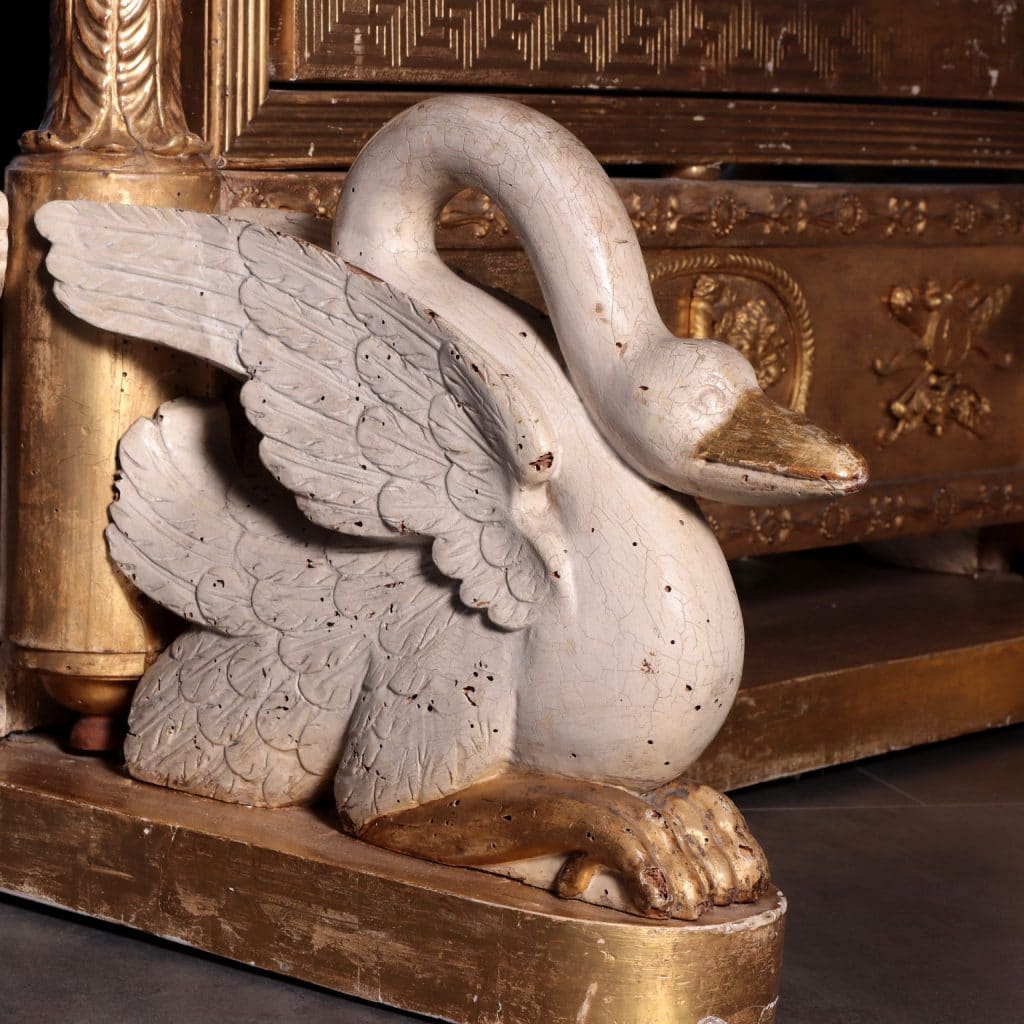Empire Psiche, France, first quarter of the 19th century
France, first quarter of the 19th century
Description:
The psyche rests on a shaped shelf, at the base there are two pairs of opposing swans, the wings folded back and the curved neck; they are entirely lacquered in white, with the exception of the beak and legs, which are gilded. Between the two pairs of swans holds the tilting mirror, a plinth base decorated with relief carvings; a border with phytomorphic motifs and in the central part two friezes of arms that frame a medallion depicting a young Apollo, intent on playing the lyre riding a lion. The central psyche mirror has both the classic tilting movement, within a Greek frame, and a rotation movement, thanks to a vertical pivot. The mirror is framed between a pair of tapered columns decorated in the lower part and in the capital with leafy carvings; these support the upper entablature, decorated on the sides with a pair of lire, while on the front a central festoon, within which a quiver with arrows, from which ribbons branch off, tied to the wings of a pair of swans. The height ends with a small frame with a groove carved with subsequent leaf motifs. Entirely gilded.
Dimensions: 191 x 101 x 81 cm ( 75,1 x 39,7 x 31,8 in )
CODE: ANMOAL0109580
Historical-artistic analysis:
The representation of swans as decorative but also structural elements in the furnishings is a peculiar feature of the Empire. Together with other animals, it is not unusual to find these birds in the uprights of beds, gueridons or even in chairs. This subject had a great fortune and spread also thanks to its appreciation by Giuseppina di Beauharnais, becoming almost a real symbol. In particular, noteworthy are the furnishings that the empress had for the Malmaison castle, which became her final residence following her divorce from Napoleon Bonaparte. Well known are the gondola armchairs with armrests carved in the shape of a swan and lacquered in white, in a way that ours resume. The chairs were made for the empress by Jacob Desmalter based on a design by Charles Percier and Pierre-François-Léonard Fontaine, the two main architects who promoted and invented the truly imperial taste, whose designs became real models for the fashion of furniture and of the preparations of the time.
Bibliography:
– Alvar González-Palacios, Casa d’Oro, Gli Stili dei Mobili, Fratelli Fabbri Editori, Milano, 1966;
– Madeleine Jarry, Pierre Devinoy, Les siège Français, Office du Livre, 1973.
- Empire Psiche, France, first quarter of the 19th century

Antiques, Art and Design
FineArt is the new ambitious Di Mano in Mano project that offers an exclusive choice of antiques and design works, presenting them for their singularity and uniqueness.




